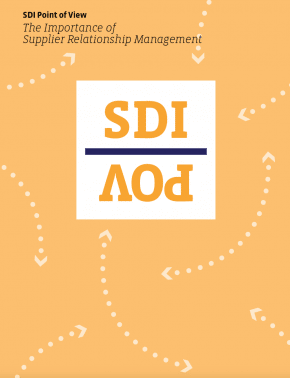Posted on Thu, 04/21/2016
Supplier Relationship Management (SRM) is a systematic, enterprise-wide assessment of suppliers’ assets and capabilities in view of the organizations overall business strategy, a determination of what activities to engage in with different suppliers, and planning and execution of all interactions with suppliers, in a coordinated fashion across the relationship life cycle, to maximize the value realized through those interactions. The focus of SRM is to develop two-way, mutually beneficial relationships with strategic supply partners to deliver greater levels of innovation and competitive advantage than could be achieved by operating independently or through a traditional, transactional purchasing arrangement.
SRM encompasses five primary tasks:
- Segment the Supply Base
- Measure & Improve Supplier Performance
- Become a Better Customer
- Collaborate with Suppliers
- Improve Supplier Quality
Segment the supply base

As an MRO Service provider, one key aspect of SDI’s offering is that we are brand and supplier neutral in our approach, focusing solely on delivering value to our customers in the execution of their MRO supply chain. This differs from a distributor, whose primary business and revenue models are focused on selling specific lines of products to clients – regardless of need or expanding inventory levels. A supplier neutral approach allows us to fully align to our clients’ business goals in an unbiased way while developing deep supplier relationships – rather than eroding value through immature and fractured supplier relationships that are not focused on value delivery.
Another factor that can impact the overall size of the MRO supply chain is the vast nature of the commodities included under the MRO umbrella. In the case of SDI, nearly 40 such commodities exist. This is further compounded by the high demand mix of MRO parts required for increasingly complex production lines – a 60% turnover rate that leads not only to a higher incidence of obsolete inventory, but also leads to proliferation of the supply base.
As such, SDI’s active supplier base has ebbed over time, growing with new clients and supplier entrants and shrinking through focused efforts on identifying those suppliers with whom the greatest value creation opportunity exists. As a way to counteract supply base growth, SDI engages in a process of supplier segmentation, seeking to identify those suppliers with whom we can work with to achieve greater levels of value creation for our customers. Segmentation of suppliers is one way to help ensure the proper alignment of resources within an organization and thereby manage for value versus managing solely for performance.
Measure & Improve Supplier Performance
Performance is much more than compliance. While establishing strong contract relationships and ensuring buyer and supplier compliance to those agreements is one part of delivering value, it can, if not properly contained, distract from the ultimate value created from a supplier partnership. Value from a supplier partnership comes through innovative and collaborative activities that focus on solving customer problems. Within SDI, we recognize that in our customer’s eyes, we are only as good as the suppliers with whom we choose to do business. If our suppliers fail to deliver, then SDI has failed.
Supplier performance objectives and measurements must focus on, and be tied to, the overall objectives of the business. In SDI’s case, this means meeting and exceeding our clients’ expectations for the management of their MRO supply chain.
To read about the last three steps, download the full paper here. Let me know what you think!




